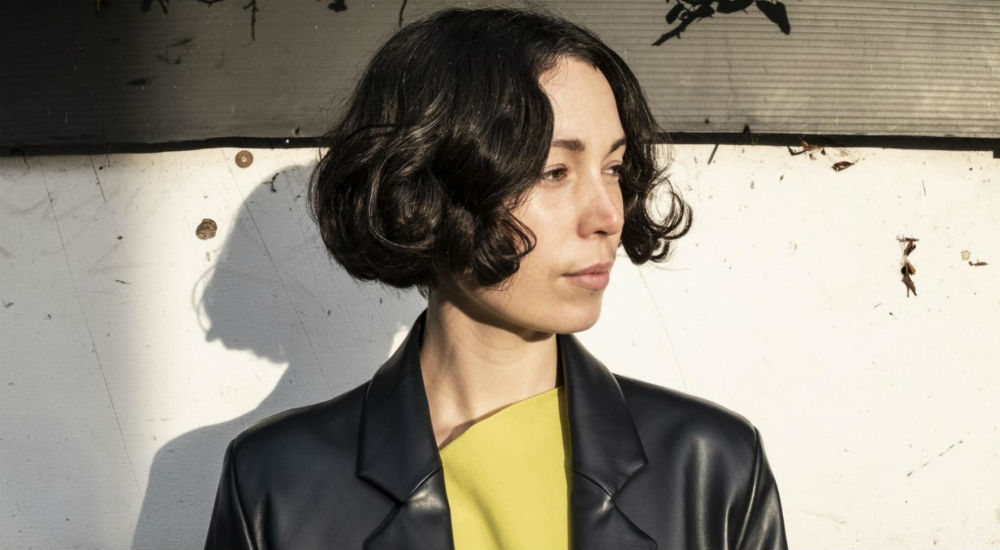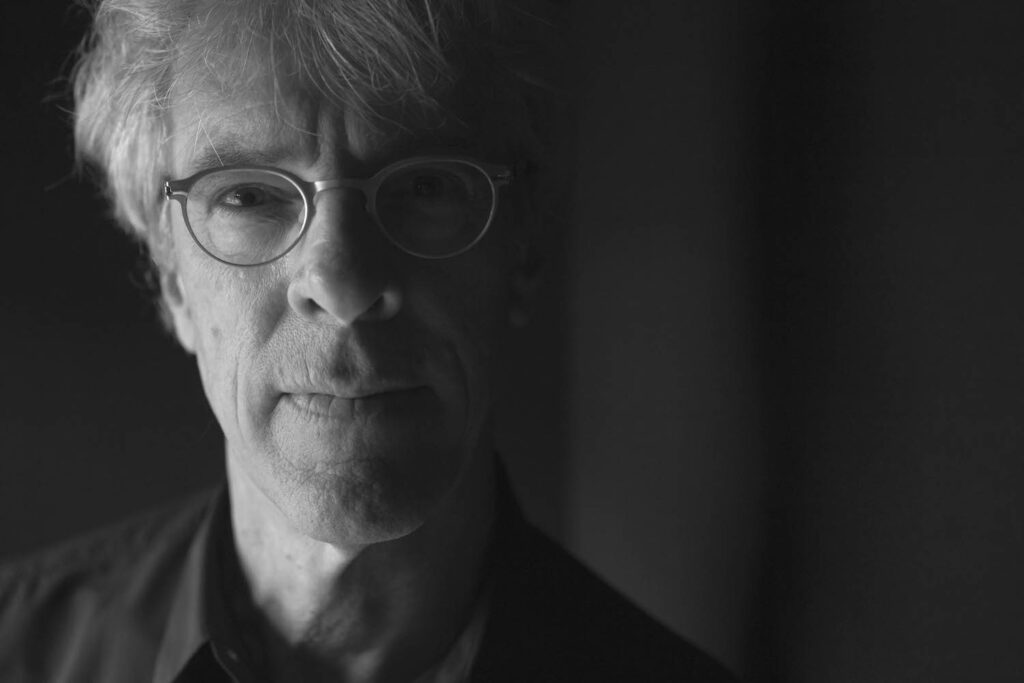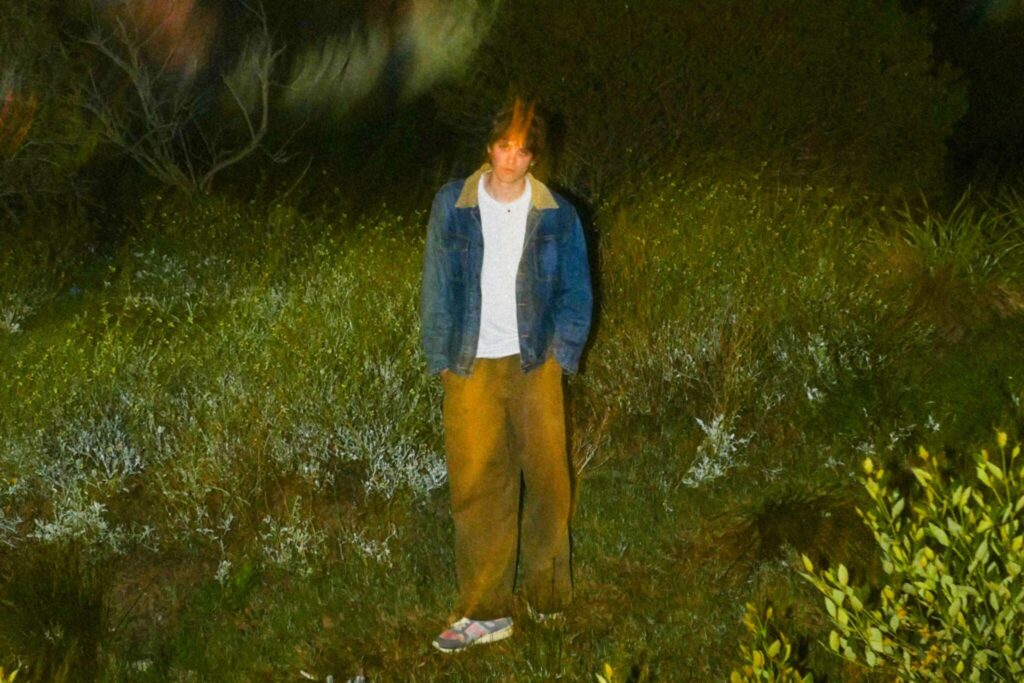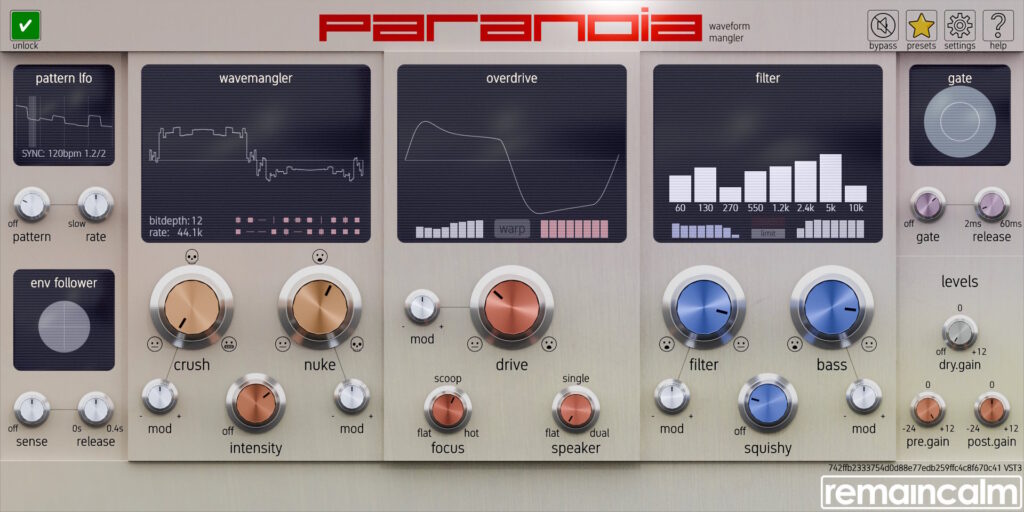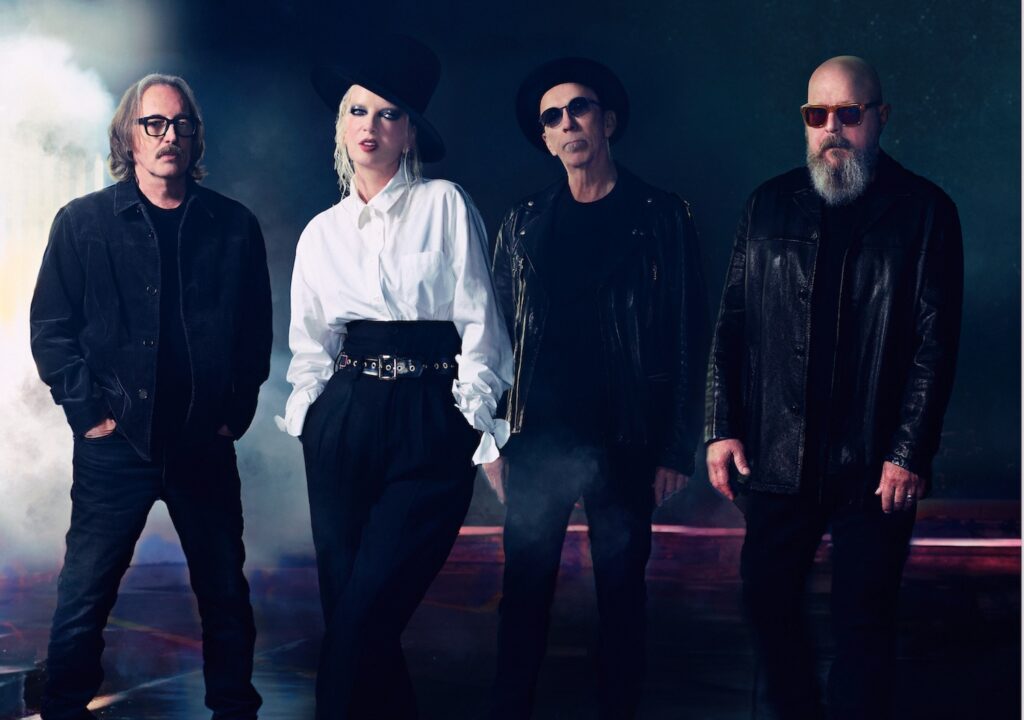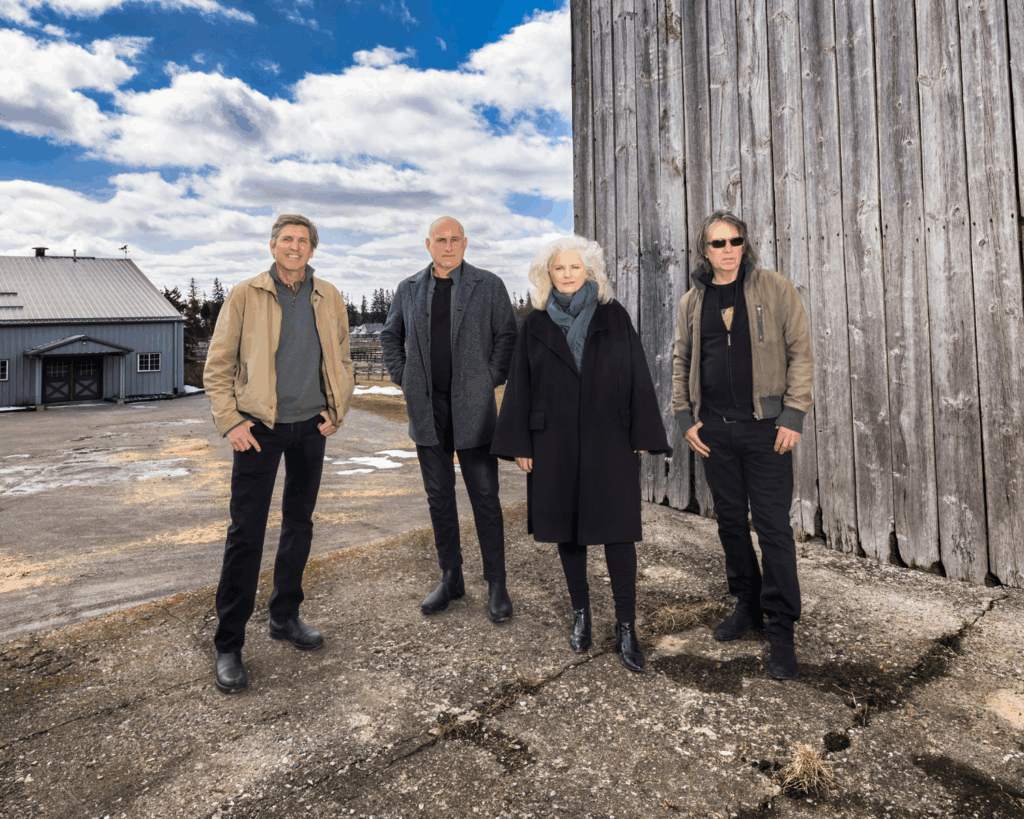Born in Wales, Owens initially worked as a nurse before becoming enamoured in the thriving indie scene of her neighbouring Manchester, resulting in her decision to move to London and pursue a career in music. After spending years working and interning with a number of record stores and labels – all while playing bass with blog buzz nu-gazers The History Of Apple Pie – Owens experienced her Eureka moment after collaborating with UK producer Daniel Avery on his critically acclaimed LP Drone Logic.
After further establishing herself with two incredibly promising and diverse solo projects – 2016’s Oleic EP and 2017’s self-titled full length – Owens has now well and truly stepped out into the unknown with her latest effort Inner Song, released today through Smalltown Supersound. An incredibly potent record in both a sonic and intellectual sense, Inner Song sees Owens navigate the turmoil of recent years through the medium of sound, with each track acting as a reevaluation of her own circumstances, surroundings and world view. It’s a fantastic full-length that functions as an incredibly rewarding listen, and poises Owens as a true trailblazer within the realms of contemporary dance music.
Prior to the album’s release, we sat down with Kelly Lee Owens to dissect each track on Inner Song to find out about the influences, composition and hidden meanings behind each song on the album.
Inner Song starts off with ‘Arpeggi’, a cover of Radiohead’s ‘Weird Fishes / Arpeggi’ that really sets a massive tone for the record. It’s a pretty big track to open an album with; what made you choose this one? What does the original mean to you?
“It’s funny because everyone’s just like, ‘Oh my God, I can’t believe you’d open up for the album with that’, and I’m just like, ‘maybe I’m just absolutely mad’, because in comparison to most people I’m like, ‘oh, this makes sense’. It was recorded a year earlier than the rest of the album; I did it on like the (Sequential) Pro One within two afternoons because I was just curious about covering it, and figured it all out on MIDI just to see what the hell would happen. You can hear me just going and having fun and tweaking, opening the filters and stuff all in like real time, like I would kind of playing live.
“In Rainbows is one of the best records I’ve heard in my life. I’ve listened to it countless times, and that production on it is phenomenal and the panning… It’s just unreal to me. Initially there was also a vocal take, but very quickly I was like, ‘absolutely not, I’m not Thom Yorke, I’m not going to bother. Let’s just keep it simple and have fun.’ The spaciousness in it in a way is representative of the beginning of this other phase for me. For me, space is where the darkness is, which is also where things begin. The darkness is like creation, so for me, with my experiences as well, it was like something was bubbling up from those depths. ‘Arpeggi’ is like a place of rebirth for me, sonically.
‘On’ kind of starts off with this really dreamy instrumental which all of a sudden dissipates when the kick and the bass drop in really hard. It seems like the lyrics of this track are about a relationship breaking down – does the heaviness of that drop pertaining to what you were singing in the first half of the song at all?
“I think it’s over simplistic – and this is just me stating that because I feel like I need to – to say it’s just about a breakup. There’s so many senses of love involved and the biggest one is a loss of self. It’s more about acceptance as a whole, and acknowledgement of things that have happened to you, and not being afraid to feel. When you lean into it, the acceptance will come – you can’t skip the gnarly stuff, because it will come back in other ways.
“It’s especially important for men to go into those emotional spaces and to feel, and to not skip it and to do the work. Then the acceptance comes, and what can come from the acceptance is what you hear in the second part. The second part is the ‘moving on’ bit, which is only possible because of what’s gone on before and the first half takes strength and courage; to feel. But the second half was like me finding that courage to move forward and celebrate life and your experiences, and transmute the pain and the loss into a sound. Even with the synths bouncing back and forward, it feels like there’s a conversation asking if we can still do this, but then it really breaks off.”
‘Melt!’ is probably one of my favourite tracks of the year – the fact you made such a heavy banger about climate change is just next level. How do you convey the severity of the climate crisis within the context of a techno track, and is it true you sampled an iceberg on this song?
“I felt like it was important to have a techno banger, but I didn’t want it to just be for the sake of it. So, I was asking myself ‘what needed to be said?’ What was going on?’ An artist’s duty is not about always reflecting on things that happened to me, it’s about tapping into collective experiences and collective consciousness.
“For me, climate change is a massive issue, and we’re all grappling with how we can be better, especially as musicians and having to travel a lot. Like, what is it we can be doing to lessen the impact on the earth and give something back? We should all be pressuring our governments to work towards a more sustainable structure in terms of energy.
“When it came to making ‘Melt!’, I was like ‘Well, what’s more important than the literal sounds of nature to convey that?’ Obviously, I didn’t go to the fucking Arctic and sample some glacial thing melting; that would be ridiculous. So I found these samples online, and I don’t normally do that – I usually use my own, but for this one, it just wasn’t possible. There’s a bunch of sounds of glaciers melting and people skating on thin ice, which is kind of a metaphor for where we are right now. To be able to convey that messaging in a club setting, although we can’t do that right now, will be really interesting.”
‘Re-wild’ strikes me as to track this guided largely by tapping into a vibe as opposed to kind of any sort of rigid musical concepts. What catches your ear in the studio – are you chasing specific moods, or guided by joining sequence into the next?
“Probably more the last one. I have a lot of my own samples, so usually ideas will be based around that, or a particular rhythm or bass pattern. With ‘Re-wild’ particularly, I wanted to make a track that was more RnB leaning, because I’m obsessed with how bass is produced in those tracks. I wanted something really spacious and boomy, and the reason I wanted that was like this track is about ‘re-wilding’ the spirit after trauma.
“What I really like about this track – and it wasn’t intended – was that I had a very sore throat when I was recording. I think I’d been singing for like a week and my voice was quite croaky, but it sounded really good. I also pitched down my vocals by an octave to use as a layer, which adds this depth to my voice. I love how slow and gritty it is; it’s almost like this cool weed jam.”
‘Jeanette’ is definitely one of the more conventional dance tracks on the record. Did you intentionally go into this record with the idea of making tracks that’d go off in a live setting?
“With this record a bit more, yeah. I’d been on the road playing live and DJing for the last three years, so how can that not inform what you create the second time round, you know? I think everyone’s looking for those moments, so it has to be the right song and the right setting.
“For ‘Jeanette’, I wanted it to be quite free and liberating, because this record has a lot of emotional weight. I think that one’s the lightest in a sense, and it kind of feels like you’re getting lifted somehow you know. I made that one a few months after I did ‘Luminous Spaces’ with Jon Hopkins, and I think that those two are quite similar.”
‘L.I.N.E’ is a beautifully written song that has this really dreamy, indie-pop vibe to it to it. You used to play bass in The History of Apple Pie years ago; was there any significant experience with music that happened to be a turning point away from playing in a band to doing what you are now? Do they ever overlap?
“Where I come from in Wales, everything is about song in a more traditional sense and melody and melancholy, so I’ve always had that instilled in me. Growing up, Manchester was only a 45 minutes drive away, and that city’s history with music is just phenomenal, so seeing live bands there just blew my mind.
“It was only really when I worked with Daniel Avery on Drone Logic that I actually saw what was possible with dance music. I came to really respect it when I realised it was all physical. Analogue, for example, is physical. I just got it all in one session, and was like ‘actually, this is amazing. Now I understand the craft.’ And now I’m obsessed!”
John Cale shows up for a memorable spoken word feature on ‘Corner Of The Sky’. Can you tell me how that track came about?
“The working title for that one was originally ‘Mushroom’ – that’s the only thing that I’m going to say about that. It was a very kind of trippy, psychedelic experience, and I could just hear John Cale’s voice all over it. feel that track is kind of connected very much to nature, and I wanted something to do with Wales on it – especially Welsh language. Some people don’t even know that Wales has its own language and that it was a dying language, and I think it’s very important to keep that alive.
“I sent it to John because we had done a previous session a couple of years ago, and said ‘I have this track. If you connect to it, could you try and connect to your relationship with Wales, and if you feel like it some Welsh language on it?’ He sent it back with all the lines you hear, but in a completely different arrangement – it was all over the place, but in the most beautiful sense. But I knew it needed a slightly different arrangement just to really make it go off, so I had to arrange John Cale’s vocals while I mixing, really late into the mixing process. I’m really pleased with how it came out. He’s a fucking legend, and it’s just an honour to have him be part of my artistic experience.”
‘Night’ uses these two really distinctive instrumental sections to drive the track: the first feels really bright and shimmering, and the second is super dark and heavy. It almost sounds as if you’re contrasting day and night, and using the refrain ‘It feels so good to be alone / With you’ to exemplify these dualities in a sense.
“Yeah. For me, this track is about how the veil gets thinner emotionally during the nighttime so you can access your true feelings. We’ve all been there at night where you lay there over-thinking – in the daytime we’re so distracted. There’s so much to keep us busy from a true feelings. The nighttime is this magical time that can be really intense, but where things are really can be felt. It’s kind of like a conversation with myself, but also in relation to someone else, which is why it starts smaller and then builds, which is reflective of those feelings becoming more and more intense.
“When it really kicks in, I sing ‘It feels so good to be alone’ but then it drops when I say ‘With you’, which is that moment of total vulnerability and openness, and I wanted that to be a strong thing. Being vulnerable takes a huge amount of strength.”
‘Flow’ uses some really interesting synth arpeggios and rhythmic ideas that stick out and take the track into an experimental direction. What are we hearing here? Was that sound through any specific piece of gear at all?
“We have a ceremony room that’s full of gongs and like crystal balls and random instruments, and there was a hand drum left there one day. I made a sample on my phone of me playing it, which turned into the main riff. It was just a more organic sounding track, and it’s called ‘Flow’ because it has that moment of coming down. A record for me is a journey, and the track-listing is important for that reason. Also, the kick pattern on that track is one of my favourite on the whole album. I still can’t believe I did that!”
‘Wake Up’ makes for a really apt finale for the album. It sounds like some kind of internal monologue or mantra, and ends with this big euphoric rush at the end that almost signifies a new beginning. Can you tell us how this represents the end of Inner Song?
“Lyrically, I was tapping into a collective theme, but a collective theme is always a personal theme in one way or another. It’s a commentary on swipe culture and the digital age – losing our minds for the short term gain. There’s a lyric that says ‘Never pausing to take it in / Always avoiding your sense of dread.’ We’re all so distracted by technology, and that means that we’re never actually reflecting on where we are individually and collectively. How in a capitalistic society can we pause and be like, ‘Whoah, hold up a minute. What is actually going on?’
“We feel it. We know that nature is not okay. Of course, technology can be amazing – don’t get me wrong. But it’s not okay if it’s distracting you from doing the inner work and actually seeing where you are and where we are as a collective. That’s where ‘Wake Up’ comes from. It’s a a command, but it’s like a gentle reminder. I think for me personally, it’s about that rebirth moment; waking up to what I would call a new phase in my life. But now, interestingly, we’re going through that as a collective. It’s always connected.”
Kelly Lee Owens’ new album Inner Song is out now through Smalltown Supersound.
